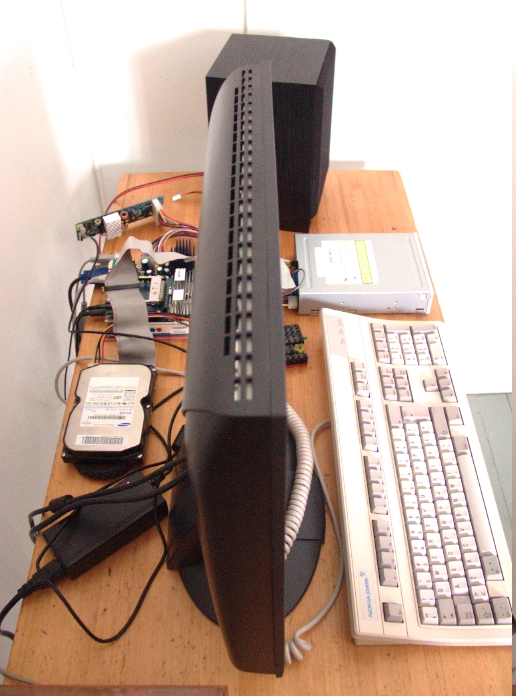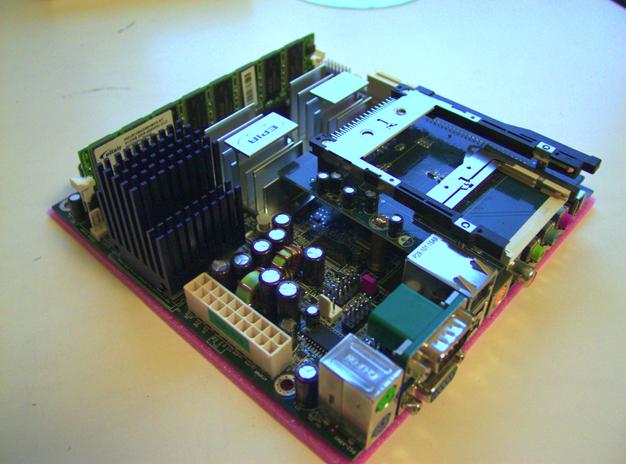hoo |
|

The CLE266 graphics chip works mostly well with the X.org opensource drivers. XVideo works, but it is quite pixelated; if you use MPlayer, using -vo xvidix -nocolorkey gives better-quality hardware scaling.
For 3D acceleration (OpenGL), new DRI patches are probably needed; I haven't bothered with these lately. Binary drivers (kernel and/or X) may or may not work.
The PC Card and CF slots are standard CardBus interfaces. They work fine with the usual Linux tools and kernel drivers.
I struggled for a long time to get the mic input working. It was a simple switch in alsamixer that had to be toggled on: External Amplifier, which probably means the mic preamp.
The card has a 5.1 output as well using the line and mic inputs for the extra outputs. It works, but I have not used it much due to the lack of an appropriate speaker system.
I bought the EPIA-MII in January 2004, and it has undergone a number of modifications since then, so here's the latest stable iteration.
Unfortunately, it has been the only truly flaky piece of hardware I've owned, as it has degraded over time. As far as I know, it's solely due to the cheap capacitors that have bulged and leaked. The first time (autumn 2004) I tried a warranty replacement; the process took 2 months, and I got back a new instance of the same model. With the same flaky capacitors. The next series of lockups came in late 2005 and I decided to replace them myself, which was a success. Until July/August 2006 when more of the old caps started to misbehave. I'm currently in the process of replacing all of the caps that are even slightly bulged.
The fansink is another thing I've replaced, though it's worked consistently over time. The problem is the whining noise, which to me is not acceptable in such a cool and quiet system. The fansink design is a typical dumb one, with air blowing against the plane of the processor (hello fluid mechanics 101!). My replacement is a passive one using the ZM-NB47J northbridge heatsink.

Someone else got the exact same idea, though using an additional case fan. My system is totally fanless, with a 'skeleton case' that seems to get enough natural airflow. The sink does get hot, up to about 85°C with full CPU load, but the system is stable anyway and I don't run any persistent CPU hogs. The problem is further mitigated with CPU scaling that is available with the current stable Linux kernel.